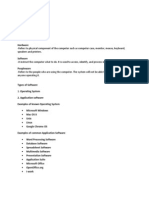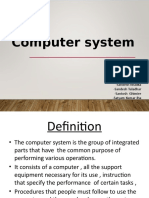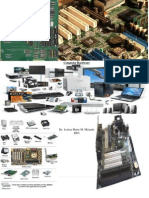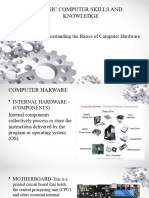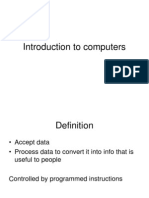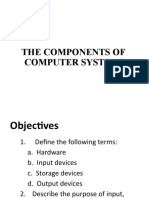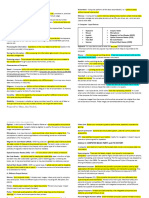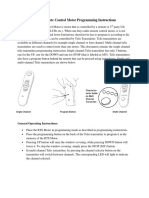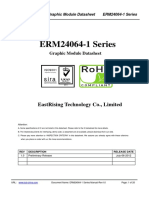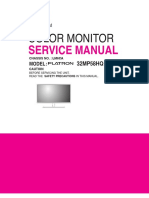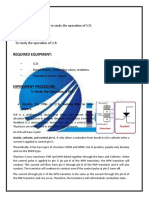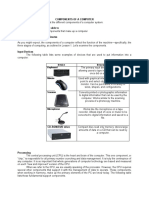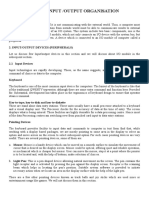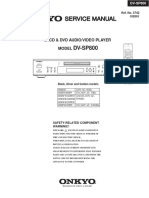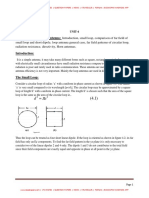0% found this document useful (0 votes)
83 views24 pagesTypes of Computers & Computer Hardware
There are several types of computers including microcomputers like desktops and laptops, supercomputers, and mainframes. Computer hardware includes the central processing unit (CPU), input devices like keyboards and mice, and output devices like monitors, printers, and speakers. Storage devices are used to keep data when the computer is powered off and come in forms like hard disks, floppy disks, and CDs. Peripherals expand the capabilities of computers for input, output, and storage.
Uploaded by
Cara GregorioCopyright
© © All Rights Reserved
We take content rights seriously. If you suspect this is your content, claim it here.
Available Formats
Download as PPTX, PDF, TXT or read online on Scribd
0% found this document useful (0 votes)
83 views24 pagesTypes of Computers & Computer Hardware
There are several types of computers including microcomputers like desktops and laptops, supercomputers, and mainframes. Computer hardware includes the central processing unit (CPU), input devices like keyboards and mice, and output devices like monitors, printers, and speakers. Storage devices are used to keep data when the computer is powered off and come in forms like hard disks, floppy disks, and CDs. Peripherals expand the capabilities of computers for input, output, and storage.
Uploaded by
Cara GregorioCopyright
© © All Rights Reserved
We take content rights seriously. If you suspect this is your content, claim it here.
Available Formats
Download as PPTX, PDF, TXT or read online on Scribd
/ 24






